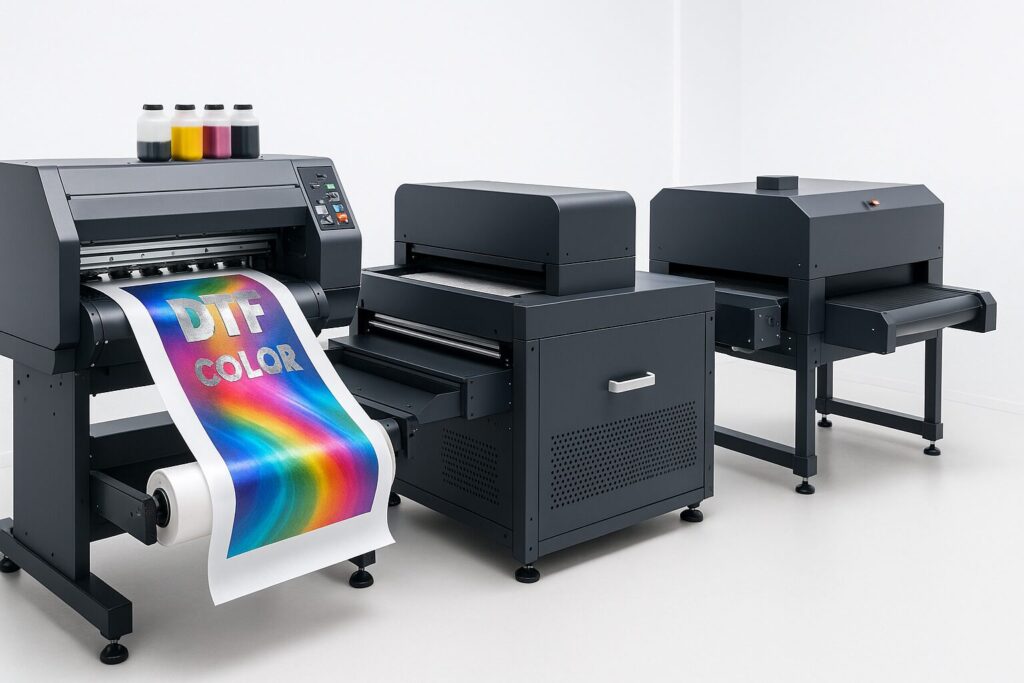Direct-to-Film (DTF) has moved far beyond basic T-shirts. With the right films, adhesives, workflows, and effects, DTF lets you customize complex fabrics, hard-to-print items, and even select non-apparel goods—fast, affordably, and at any run size. This guide maps the advanced applications that unlock new revenue while keeping production lean.
Breakthroughs live in small, deliberate tweaks. Tune the process, and clarity follows. Let this be a nudge to test, learn, and push DTF beyond the obvious—where craft meets code and every print shapes tomorrow.
Why DTF Wins for Customization
DTF separates design from garment handling: you print once, then transfer wherever and whenever. That means consistent color, quick repeats, and easy personalization without re-hooping, reclaiming screens, or reloading a press. Low-temp adhesives, blocker layers, and special films expand what you can decorate while protecting the fabric and finish.


Apparel Beyond Basics: Names, Numbers, and Micro-Runs
Team kits and uniforms: Variable-data names and numbers drop straight into your RIP, ganged by size and color. Keep spare sets on hand for mid-season swaps.
Corporate programs: Pre-print brand assets; heat-apply departments, locations, or event info on demand.
Workwear: Durable transfers for high-abrasion zones; add reflective overlays for compliance and visibility.
Technical & “Difficult” Fabrics
Nylon, ripstop, and shells: Use low-temp adhesive films and blocker layers to prevent dye migration. Shorter press times protect coatings and maintain drape.
Stretch performance wear: Elastic-friendly films resist cracking; finish with a second light press to smooth the hand.
Pigment-dyed/bleed-prone garments: Pre-test with a bleed-block base; adjust white-ink laydown to reduce stiffness.

Headwear, Labels, and Patches
- Caps and beanies: Use curved platens or cap presses; low-profile transfers keep seams flat and crisp.
- Woven-look patches: Press DTF to twill/felt first, then sew or heat-apply the patch to garments for a premium finish without merrowing every edge.
- Inside neck labels: Crisp, durable care/brand labels with consistent placement and minimal bulk.
Bags, Gear, and Non-Apparel Targets
- Totes, backpacks, duffels: Nylon/poly blends transfer well with low-temp films; test for coating compatibility.
- Leatherette and coated substrates: Light pressure and short dwell preserve texture while securing adhesion.
- Wood and décor panels: Smooth, sealed surfaces can accept DTF for short-run signage and gifts; always test adhesion and scuff resistance.
Note: For rigid, curved items (bottles, tumblers) many shops use UV-DTF—a related but different process using UV inks and a laminate. Treat it as a separate workflow.

Special Visual Effects That Sell
- Reflective and high-vis: Layer reflective elements over DTF for workwear and night events.
- Metallic, glitter, and foil-like finishes: Specialty films create premium looks without foil stamping.
- Matte vs. gloss clears: Post-press finishing sheets tune surface sheen to match brand aesthetics.
- Puff/3D effects: Heat-activated texture on logos and typography for tactile impact.
Automation & Variable Data at Scale
- AI-assisted nesting/ganging: Maximize film usage and minimize cutter mistakes.
- Queue automation: Balance white-ink laydown, predict ink usage, and keep curing capacity fully utilized.
- Barcode picking and kitting: Label transfer sheets with SKUs and sizes; scanners guide pack-out to eliminate mis-ships.
- On-site personalization: Pre-print blanks and press names/events live at pop-ups for instant delivery.
Sustainability in Practice
- Powderless/low-powder systems: Cleaner floor, less respirable dust, more consistent hand feel.
- Low-temp films: Reduce energy use and protect sensitive fabrics.
- Right-first-time color: Calibrated RIP profiles cut reprints and scrap.
- Responsible chemistry: Favor films/inks with published safety data and compliance info for children’s wear where applicable.
Quality & Compliance Checklist
- Wash/abrasion testing: Run 5–10 cycle tests on each new garment type; record peel strength and visual changes.
- Dye-migration checks: 24–48 hour hold after pressing on sublimated/poly garments.
- Care instructions: Provide garment-appropriate wash/care tags to reduce customer-caused failures.
- Documentation: Keep MSDS/technical sheets on file; verify claims with your own tests.
Quick “Recipe” Ranges to Start Testing
Always follow your film vendor’s specs, then dial in per fabric. Typical starting points:
- Cotton/cotton-rich: 285–305°F (140–150°C), medium pressure, 10–15s; warm/cold peel depending on film.
- Poly/bleed-prone: 265–290°F (130–145°C), medium pressure, 8–12s; use blocker base; cool peel.
- Nylon/shells: 250–275°F (120–135°C), light-medium pressure, 8–12s; test for coating; cool peel.
Finish with a light 3–5s cover-sheet press to smooth the surface if needed.
Pricing & Packaging Ideas
- Tiered bundles: Mix base logo sheets with on-demand variable elements (names/numbers).
- Value-add effects: Price reflective/metallic/puff as premium layers.
- Program accounts: Offer replenishment packs with barcoded sheet sets for easy restock.
Action Plan
- Pick two advanced applications from this list that match your current customer base.
- Run a one-week pilot with documented settings, cycle time, energy use, and failure rates.
- Write the SOP, train the team, and roll out as a named product line with clear pricing.
Bottom line: Advanced DTF customization is about using the right films, effects, and automation to deliver more SKUs, on more substrates, with less friction. Test, document, and scale—your edge is the process you can repeat.


Leave a Reply